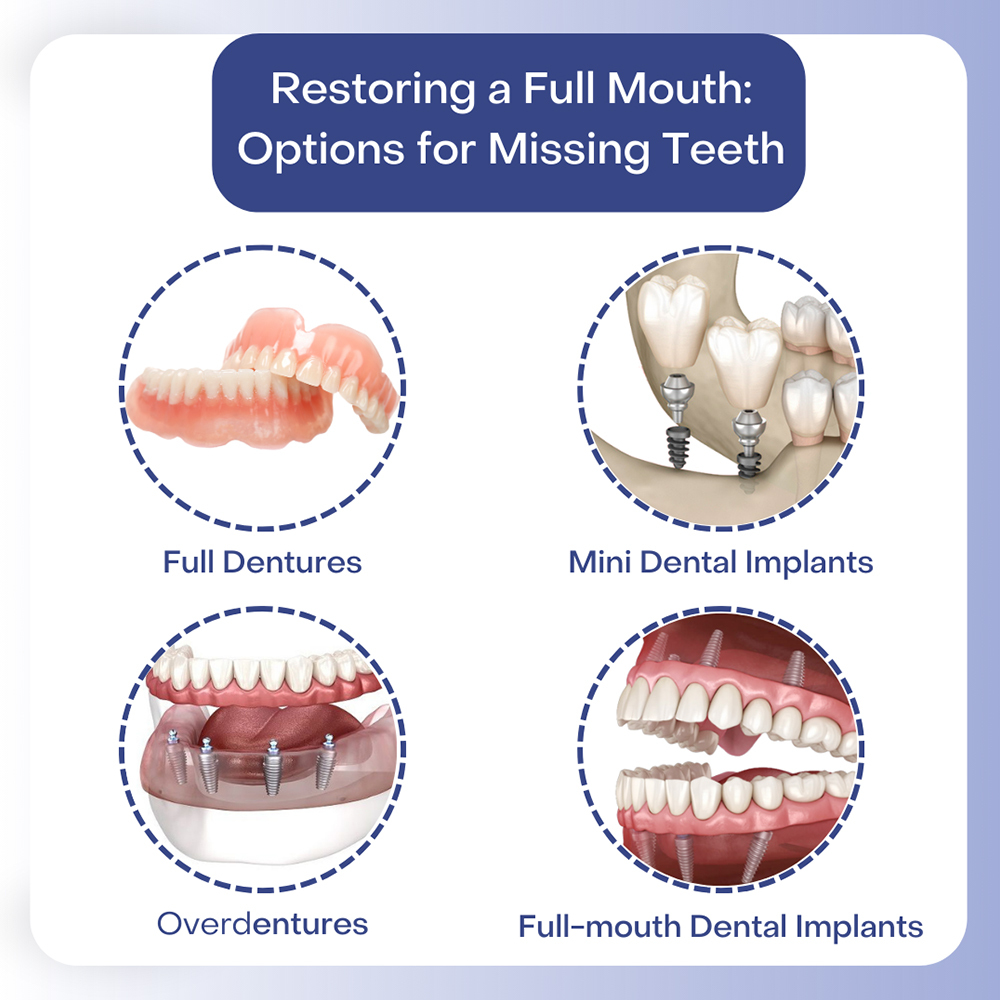The 9-Second Trick For Dental Sense
The 9-Second Trick For Dental Sense
Blog Article
Get This Report on Dental Sense
Table of ContentsDental Sense Fundamentals ExplainedSome Of Dental SenseNot known Factual Statements About Dental Sense How Dental Sense can Save You Time, Stress, and Money.
are clinical devices surgically dental implanted right into the jaw to recover a person's ability to eat or their appearance. They give assistance for artificial (fake) teeth, such as crowns, bridges, or dentures. When a tooth is lost because of injury or condition, a person can experience difficulties such as rapid bone loss, malfunctioning speech, or changes to chewing patterns that result in discomfort.Oral dental implant systems are composed of a dental implant body and dental implant joint and may also consist of an abutment addiction screw. Root canal procedure. The oral implant body is surgically placed in the jawbone in place of the tooth's origin. The dental implant joint is usually affixed to the implant body by the abutment fixation screw and expands with gums into the mouth to sustain the connected man-made teeth
(https://issuu.com/dentalsense1)Framework of The Oral Implant System choosing oral implants, speak to your dental service provider concerning the potential benefits and risks, and whether you are a candidate for the treatment. Things to consider: Your overall wellness is a crucial consider determining whether you are an excellent prospect for oral implants, the length of time it will certainly require to heal, and for how long the implant might stay in place.
Smoking cigarettes might impact the recovery process and decrease the lasting success of the implant. The recovery process for the dental implant body may take numerous months or longer, throughout which time you commonly have a short-term joint in location of the tooth. the oral implant treatment: Carefully adhere to the oral hygiene guidelines provided to you by your oral company.
The 3-Minute Rule for Dental Sense
Implant failing can result in the requirement for another operation to take care of or replace the dental implant system. Recovers the ability to eat Recovers cosmetic appearance Aids keep the jawbone from diminishing because of bone loss Protects the health of the surrounding bone and periodontals Helps keep adjacent (neighboring) teeth secure Boosts top quality of life Damage to surrounding all-natural teeth throughout implant positioning Injury to the surrounding tissues during surgical procedure, such as sinus perforation Injury throughout surgical treatment (for instance, fracture of surrounding jawbone) Insufficient function, such as seeming like the teeth do not bite together usually A sensation that the tooth hangs or twisting in position resulting from an abutment screw loosening Implant body failure (looseness of the implant body) due to systemic infection, which may be more probable in people with unchecked diabetes as a result of neighborhood infection in bone and gum tissues sustaining the dental implant body due to delayed healing, which might be most likely in individuals who smoke Problem cleaning the gums around the dental implant, leading to bad oral hygiene Untreated periodontal disease Post-surgical feeling numb as a result of nerve impingement or damages Constantly notify healthcare providers and imaging technicians that you have oral implants before any magnetic vibration imaging (MRI) or x-ray procedures.
FDA is not knowledgeable about any type of unfavorable occasions reported for MRI or x-ray procedures with oral implants. Oral implants systems are typically constructed from products that comply with international consensus criteria of the International Organization for Standardization (ISO) or ASTM International. These standards have information of what makes a secure product.

A dental implant is a structure that replaces a missing out on tooth. With screw-like tools, the surgeon inserts a dental implant right into the jawbone, and it acts as a support for a synthetic tooth, called a crown.
The 8-Minute Rule for Dental Sense
Some individuals are not qualified for dental implant surgical treatment. It is for dental specialists to operate people with: acute illnessuncontrollable metabolic diseasebone or soft cells illness or infectionIf these problems are fixed, a person can have the surgical procedure. In, oral specialists abstain from operating individuals with: If people with any of the above undertake oral implant surgery, there is a higher danger of the dental implant stopping working.

Oral implant surgical treatment is a personalized procedure. Offer click resources you time to recover. Affix the blog post and last crown, bridge or denture.
Next off, your specialist will meticulously position the dental implant right into your jaw. Your surgeon will certainly rearrange your periodontals and close the incision with stitches. If your dental implant is near the front of your mouth, your dental professional will certainly make a momentary tooth for you to put on up until you recover. This way, you won't have a void in your smile while you recuperate.
The 2-Minute Rule for Dental Sense
Your copyright can tell you what to anticipate in your circumstance. During the recovery phase, your jawbone needs to fuse to the dental implant. This process, called osseointegration, is critical for stability and long-lasting success. This procedure can take anywhere from three to 9 months. In many cases, it might take much longer.
As soon as your implant heals, your dentist can attach the joint (tiny adapter message) and your final restoration (crown, bridge or denture). This generally takes regarding one hour to complete and might need a second minor surgery. You should not feel any type of discomfort throughout your oral implant procedure because your supplier will certainly make use of drug to numb your gums.
Report this page